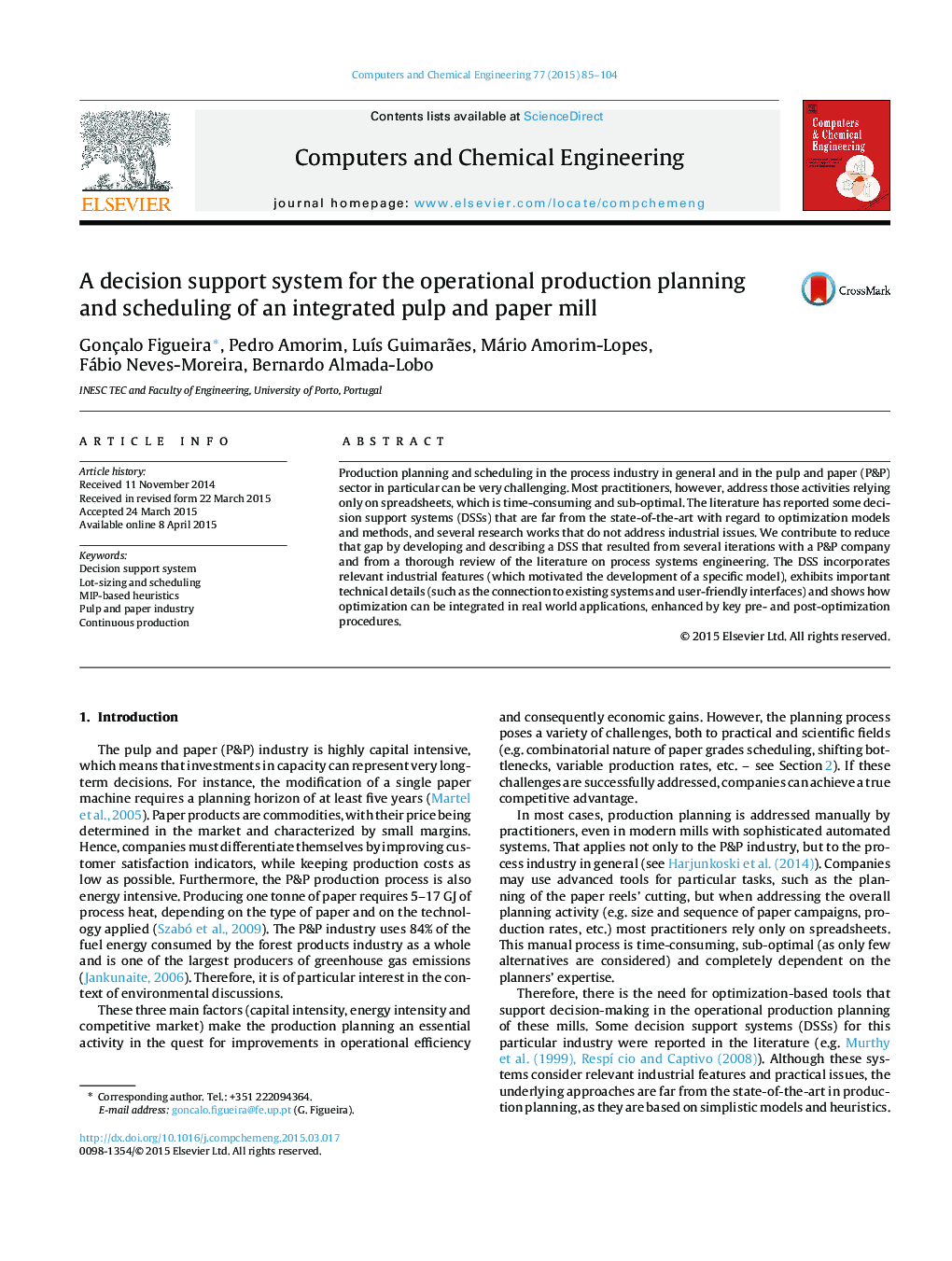| Article ID | Journal | Published Year | Pages | File Type |
|---|---|---|---|---|
| 172322 | Computers & Chemical Engineering | 2015 | 20 Pages |
•Discussion on desirable characteristics of analytical models and methods.•Identification of relevant industrial features and how they should be included in the solution approach.•Extension of models of the literature, considering practical constraints and objectives.•Important data processing in both pre- and post-optimization phases.•Exhibition of connections to existing systems and of user-friendly interfaces.
Production planning and scheduling in the process industry in general and in the pulp and paper (P&P) sector in particular can be very challenging. Most practitioners, however, address those activities relying only on spreadsheets, which is time-consuming and sub-optimal. The literature has reported some decision support systems (DSSs) that are far from the state-of-the-art with regard to optimization models and methods, and several research works that do not address industrial issues. We contribute to reduce that gap by developing and describing a DSS that resulted from several iterations with a P&P company and from a thorough review of the literature on process systems engineering. The DSS incorporates relevant industrial features (which motivated the development of a specific model), exhibits important technical details (such as the connection to existing systems and user-friendly interfaces) and shows how optimization can be integrated in real world applications, enhanced by key pre- and post-optimization procedures.
